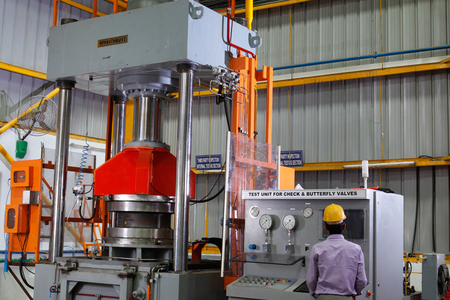The Secrets of Temperature: Measurement Methods and Industrial Applications Explained
1. What is temperature?
Temperature is a fundamental physical quantity that describes the distribution of energy among different degrees of freedom within a system. It is also an important macroscopic parameter for determining whether a system is in thermal equilibrium with other systems, reflecting the degree of heat or coldness of a substance.
Essential characteristics of temperature:
When two objects of different temperatures come into contact, heat transfer occurs. After a period of heat exchange, the two will reach thermal equilibrium, at which point their temperatures will be equal. The concept of temperature is based on thermal equilibrium.
2. Common temperature scales
Celsius scale (°C)
At standard atmospheric pressure, the freezing point of pure water is 0°C, and the boiling point is 100°C. The interval between these two points is divided into 100 equal parts, each of which is one degree Celsius.
Fahrenheit Scale (℉)
Under standard atmospheric pressure, the freezing point of pure water is 32℉, and the boiling point is 212℉. The interval is divided into 180 equal parts.
Conversion formula:
C = (F – 32) × 5/9
F = C × 9/5 + 32
Thermodynamic temperature scale (Kelvin, K)
The temperature at which molecular thermal motion completely ceases is defined as absolute zero, set at 0K. The conversion relationship with the Celsius temperature scale is:
K = C + 273.16
3. Temperature Measurement Methods
1. Contact Temperature Measurement
Temperature-sensitive elements are placed in direct contact with the object being measured to achieve thermal equilibrium.
Common instruments include:
Expansion thermometers
Thermocouples
Thermistor thermometers
Other thermometers based on different principles
2. Non-contact Temperature Measurement
Radiant energy is sensed to estimate the temperature of an object, suitable for high-temperature, moving, or otherwise inaccessible situations.
Common instruments include:
Radiation thermometers
Photometric thermometers
Colorimetric thermometers
Infrared thermometers
In industrial applications, contact-type thermometers are commonly used, such as thermistors, thermocouples, and bimetallic thermometers. Specialized applications may also utilize surface thermocouples, multi-point thermocouples, and embedded temperature probes.
4. Introduction to Commonly Used Thermometers
1. Bimetallic Thermometer
Composed of two thin metal strips with different coefficients of thermal expansion, welded together. When the temperature rises, the bimetallic strip bends due to different expansion rates, with the degree of bending proportional to the temperature. It is suitable for measuring the temperature of gases, liquids, and steam, is inexpensive, but has low accuracy and is only used for on-site temperature indication.
2. Thermocouple
Based on the thermoelectric effect (Seebeck effect): when two dissimilar conductors are connected to form a circuit with different temperatures at both ends, a thermoelectric potential is generated in the circuit. The magnitude of the thermoelectric potential depends on the materials and temperature difference.
Thermocouples have a wide temperature measurement range (-270°C to 1800°C) and are widely used in industry. Cold-junction compensation is required during use to avoid errors caused by changes in cold-junction temperature. The conventional method involves placing the cold junction in a temperature-controlled area and performing compensation calculations.
Advantages of thermocouples:
Fast response, low dynamic error
Flexible installation
High mechanical strength, good pressure resistance
Wide measurement range
Typical thermocouple types and characteristics:
Type Thermocouple name Measurement range Advantages Disadvantages
B Platinum-rhodium 30–platinum-rhodium 0–1600°C High-temperature measurement, no compensation wire required, corrosion-resistant. Ineffective at low temperatures, expensive
S Platinum-rhodium 10–platinum 0–1300°C High accuracy, good chemical stability Low sensitivity, high cost
K Nickel-chromium-nickel-silicon -200~1200℃ Good stability, cost-effective. Not suitable for reducing atmospheres, prone to interference
E Nickel-chromium-constantan -200~750℃ Highest sensitivity, good heat resistance Magnetic hysteresis, average interference resistance
T Copper-Constantan -200~350℃ Suitable for low temperatures, good stability. Limited operating temperature range, copper is prone to oxidation
5. Thermistors
Thermistors utilize the principle of metal resistance changing with temperature for temperature measurement. Suitable for measuring temperatures in the range of -200~450℃, the structure includes a resistive element, an insulating layer, a protective sheath, and a terminal box.
Common thermoresistor calibration codes:
Calibration code, Material Resistance at 0°C, Resistance at 100°,C Calculation formula (resistance change △Ω)
Pt10 Platinum 10Ω 13.85Ω (△Ω – 10)/0.385
Pt100 Platinum 100Ω 138.5Ω (ΔΩ – 100)/0.385
Cu50 Copper 50Ω 71.44Ω (ΔΩ – 50)/0.2144
Cu100 Copper 100Ω 142.89Ω (ΔΩ – 100)/0.4289
Pt100 calculation formula:
Rt = R × (1 + ∈ × △t)
where ∈ ≈ 0.00385, Rt is the resistance value at the current temperature, and R is the resistance value at 0°C.
Wiring methods:
Two-wire system: Simple structure, but high error rate
Three-wire system, four-wire system: Effectively eliminates errors caused by lead resistance; recommended for industrial applications
6. Installation Notes
Select a reasonable measurement point location: Avoid valves, bends, or dead corners to ensure accurate measurement
Insertion depth: The protective tube should be inserted at least 5–10 mm into the centerline of the pipe
Insertion direction: Should be installed facing the flow or perpendicular to the flow direction to ensure good thermal contact
7. Temperature Transmitter
The temperature transmitter converts signals from sensors such as thermocouples or thermistors into standardized outputs (e.g., 4-20 mA), facilitating remote transmission and automatic control.
Main functional settings include:
Input type selection (thermocouple, thermistor, mV, etc.)
Adjustment of zero point, range, units, damping, compensation, etc.
Supports single/dual sensor input for redundancy, averaging, or temperature difference measurement
 Certified vs. Non-Certified Industrial Valve Suppliers: What’s the Real Difference?
Certified vs. Non-Certified Industrial Valve Suppliers: What’s the Real Difference?
 Top 10 Red Flags When Selecting an Industrial Valve Supplier for Your Project
Top 10 Red Flags When Selecting an Industrial Valve Supplier for Your Project
 Slide Gate Valves Market Overview (2025–2035)
Slide Gate Valves Market Overview (2025–2035)
 E+H Servo Level Transmitter Commissioning
E+H Servo Level Transmitter Commissioning
